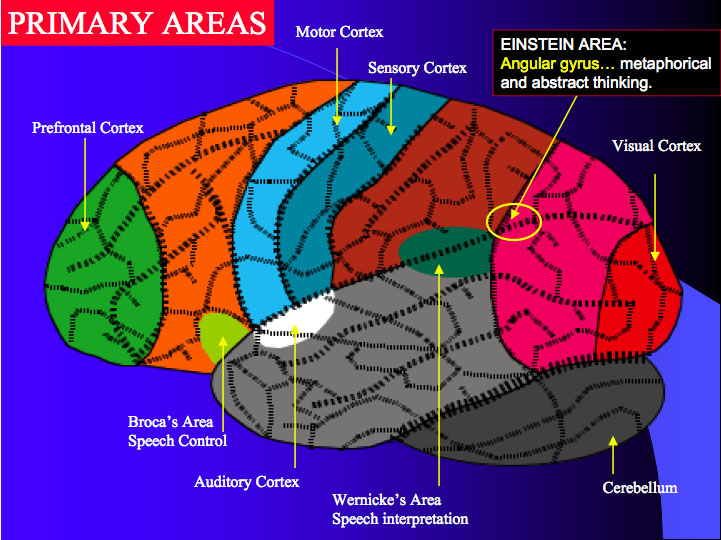
Diagram of the human
brain
The
last few posts describe only the dead ends that have been hit in AI. Other
sciences searching for this same holy grail—a clear, evidence-backed model of
human thinking—haven’t fared any better. Neurophysiology and Behavioral Psychology
also keep striking out.
If a
neurophysiologist could set up an MRI or similar imaging device and use his
model of thinking to predict which networks of neurons in his brain would be
active when he turned the device on and studied pictures of his own brain
activities, in real time, then he and his colleagues could finally say they had
formulated a reliable working model of what consciousness is. But on both the
theoretical and practical sides, neuroscience is not even close to being so
complete.
Patterns
of neuron firings mapped on one occasion when a subject is performing even a
very simple task unfortunately can’t be counted on. We find different patterns
of firings every time we look. A human brain contains one hundred billion
neurons, each one capable of connecting to as many as ten thousand others, and
the patterns of firings in that brain are evolving all the time. Philosophers
looking for a solid base for empiricism are disappointed if they go to Neurophysiology
for that base.12
Similar
problems beset Behavioral Psychology. Researchers can condition rats and
predict what they will do in controlled experiments, but many exceptions have
to be made to behaviorist explanations of what humans do in everyday life.
In a
simple example, alcoholics who say they truly want to get sober for good can be
given a drug that makes them violently, physically ill if they imbibe even very
small amounts of alcohol, but that does not affect them as long as they do not
drink alcohol. This would seem to be a behaviorist’s solution to alcoholism,
one of society’s most intractable problems. But alas, it doesn’t work.
Thousands of alcoholics have kept on with their self-destructive ways while on
disulfiram.13 What is going on in these cases is obviously much more
complex than Behaviorism’s best theories can account for. And this is but one
simple example.
I,
for one, am not disappointed to learn that the human animal turns out to be a
very complex, evolving, open-ended piece of work, no matter the model under
which we analyze it.
No comments:
Post a Comment
What are your thoughts now? Comment and I will reply. I promise.